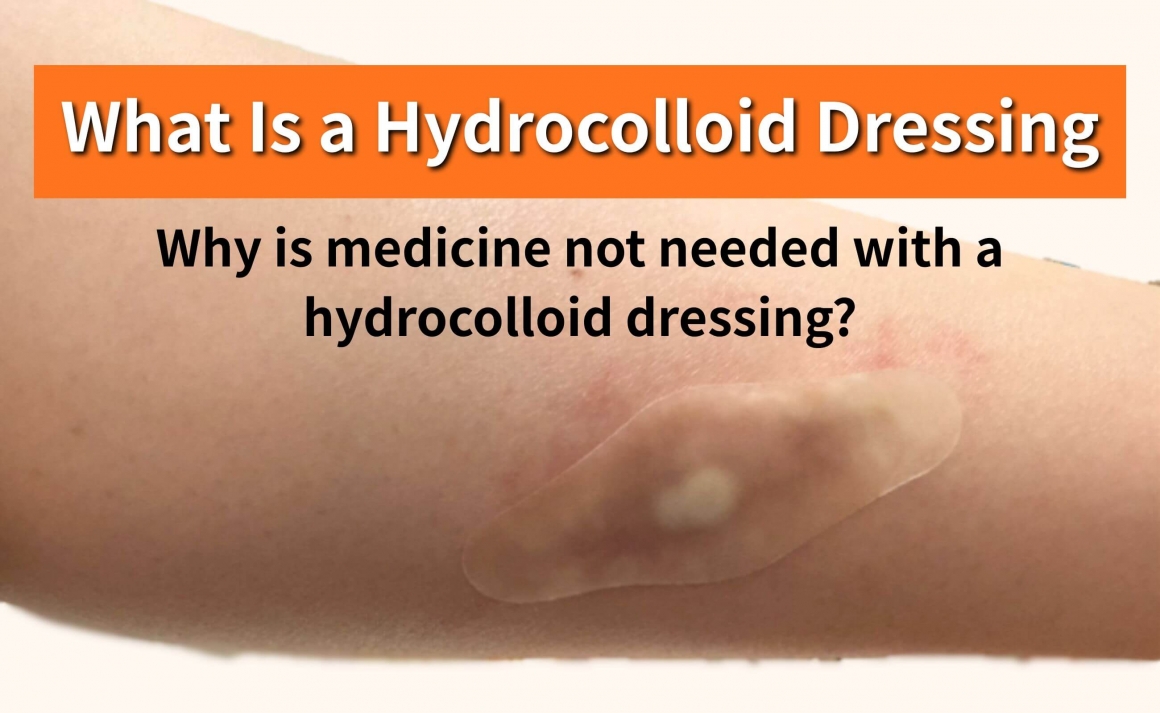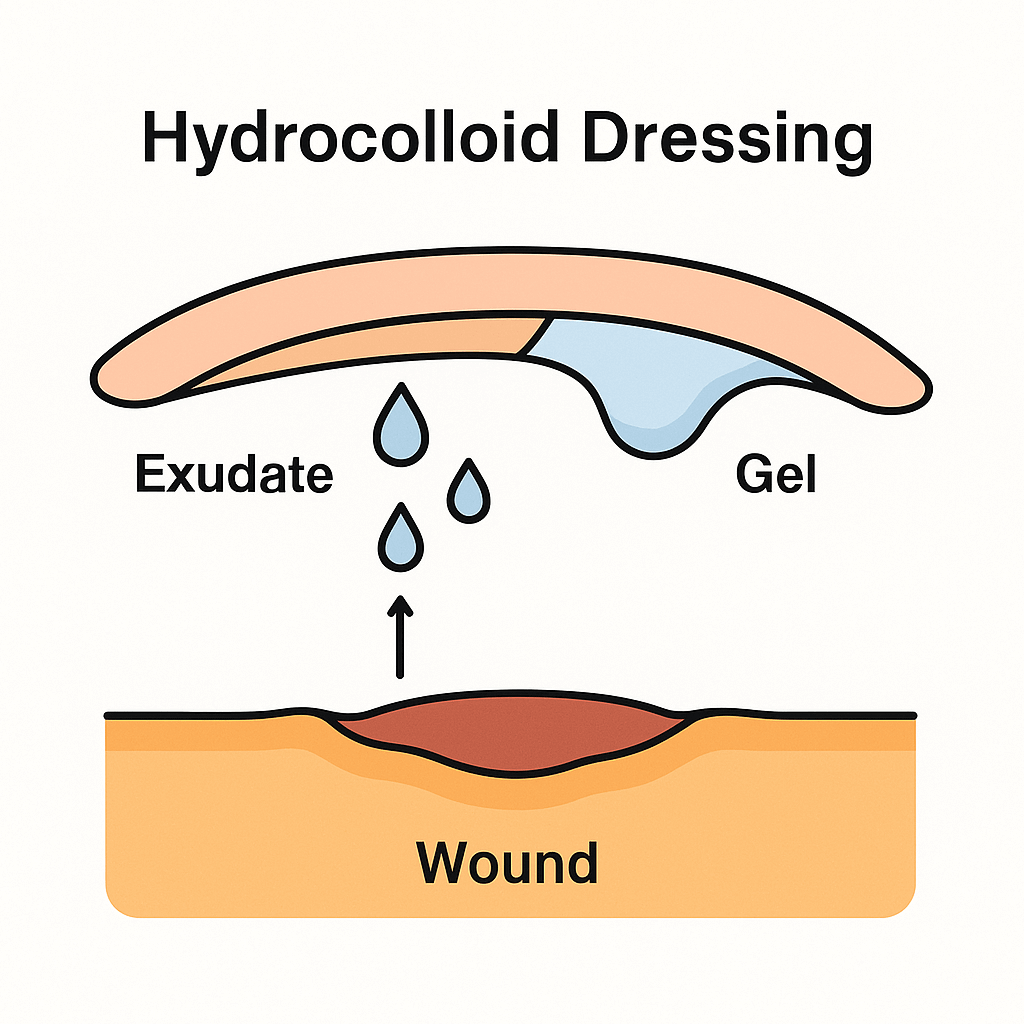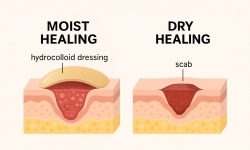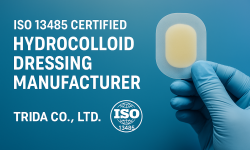What Is a Hydrocolloid Dressing and How to Use It?
What Is a Hydrocolloid Dressing and How to Use It?

Quick Summary
Definition of Hydrocolloid Dressing
A hydrocolloid dressing is a modern wound care product designed to create a moist environment that promotes faster healing. It is made of hydrophilic polymers that interact with wound exudate to form a protective gel. This gel shields the wound, reduces pain, and encourages natural skin regeneration.
These dressings are widely used in hospitals and at home because they are easy to apply, protect against bacteria, and reduce the need for frequent dressing changes.
Main Functions of Hydrocolloid Dressings
1. Moist Wound Healing
Unlike traditional dry gauze, hydrocolloid dressings maintain a moist wound environment, which speeds up healing and minimizes scarring.
2. Absorption
They absorb light to moderate exudate, transforming it into a gel that cushions and protects the wound bed.
3. Comfort and Flexibility
Soft and flexible, they adapt well to curved areas such as elbows, knees, and ankles.
4. Longer Wear Time
Hydrocolloid dressings can stay in place for several days, depending on wound condition, reducing the need for daily replacement.

When to Use a Hydrocolloid Dressing
Hydrocolloid dressings are suitable for:
- Minor cuts and abrasions
- Blisters from friction or sports
- Shallow burns or scalds
- Small surgical wounds
- Stage I and II pressure ulcers
Note: Hydrocolloid dressings are not suitable for heavily infected wounds or deep cavity wounds. Consult a healthcare professional for serious injuries.
Benefits of Hydrocolloid Dressings
- Faster Healing: Supports tissue regeneration in a moist environment
- Reduced Pain: Does not stick to new tissue, making changes less painful
- Infection Protection: Acts as a barrier against bacteria
- Less Scarring: Prevents scab formation and tissue trauma
- Convenience: Can be worn for 2–3 days without replacement
Comparison: Hydrocolloid vs Gauze
| Aspect | Hydrocolloid Dressing | Traditional Gauze |
|---|---|---|
| Healing Environment | Moist, promotes faster healing | Dry, slower healing |
| Pain During Change | Less painful, does not stick to wound | More painful, sticks to wound |
| Protection | Barrier against bacteria and contamination | Limited protection, needs frequent changes |
| Scarring | Lower risk of scarring | Higher risk of scarring |
| Wear Time | 2–3 days | Usually daily replacement |
How to Use Hydrocolloid Dressings
- Clean the wound with saline or mild cleanser
- Dry surrounding skin to ensure adhesion
- Select a dressing that covers 2 cm beyond the wound edge
- Apply smoothly without air bubbles
- Replace every 2–3 days, or sooner if saturated or detached
Final Thoughts on Hydrocolloid Dressings
Hydrocolloid dressings are an effective and modern choice for wound care. They provide comfort, protection, and improved healing, making them ideal for everyday injuries such as cuts, blisters, and abrasions, as well as clinical uses. By keeping wounds moist and shielded, they help the body heal naturally—faster and with less pain.


